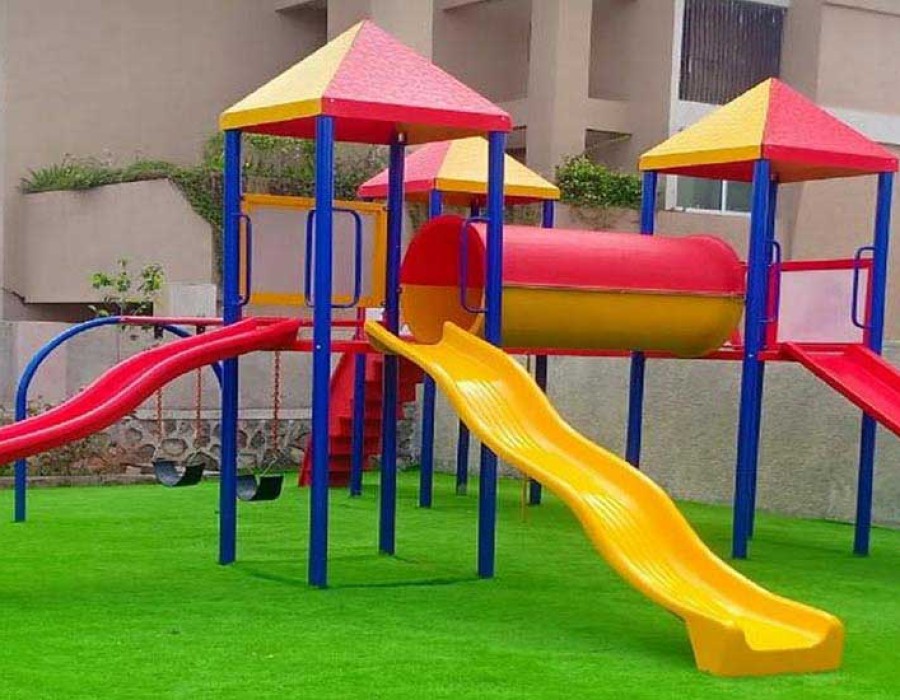Few things capture the pure joy of childhood like the squeals of laughter echoing from a playground slide. It’s more than just a fun activity—it’s an essential experience deeply rooted in the emotional and psychological development of children. Slides are often one of the first structures kids run toward on a playground, and their enduring appeal spans generations. But what makes slides so irresistible? Let’s explore the psychological factors that fuel children’s love for slides and how this seemingly simple structure plays a big role in their growth.
The Thrill of Movement and Controlled Risk
At the heart of a child’s fascination with slides is a basic love for movement. Sliding down provides a controlled rush that mimics the thrill of adventure without real danger. Children are naturally inclined to test their physical limits, and slides offer a perfect environment to explore movement, speed, and gravity.
From a psychological standpoint, this kind of play is known as risky play, which is developmentally beneficial. It allows children to engage with new sensations and emotions like excitement, anticipation, and even a small dose of fear—all within a safe space. The sensation of whooshing down a slide helps develop spatial awareness and balance while offering the dopamine kick that comes with every ride.
Emotional Confidence Through Repetition
One of the most fascinating things about children on slides is their tendency to go again and again. This repetition is more than just fun; it’s reinforcing emotional and psychological confidence. Every time a child climbs the ladder and pushes off from the top of the slide, they’re practicing independence and bravery.
As kids become more familiar with the action, they gain confidence. They learn that they can face something that once felt scary and master it. This process of confronting fear and emerging victorious plays a major role in building emotional resilience. Over time, slides help children internalize a sense of control, accomplishment, and self-esteem.
Social Skills on the Slide
Playground slides are not just solo experiences—they’re also highly social environments. Children wait their turn, watch others slide, cheer their friends on, and sometimes even negotiate for extra turns. All of these moments are micro-lessons in communication, cooperation, and empathy.
In a setting where slides are part of thoughtfully designed Outdoor Playground Equipment Manufacturers layouts like those created by Maheshwari Plays, kids are encouraged to play in groups. This naturally fosters social bonding and teaches valuable lessons about patience, fairness, and sharing.
Stimulating the Senses
Slides offer a multisensory experience that stimulates several areas of a child’s developing brain. The physical sensation of sliding activates the vestibular system, which helps with balance and coordination. The smoothness of the slide, the wind rushing past, and even the sound of others laughing all create a rich sensory environment.
For children with sensory processing needs, slides can be particularly beneficial. The rhythmic movement and predictable sequence of actions provide a comforting and enjoyable sensory input that helps regulate emotions and attention.
The Role of Imagination
Slides are not just structures—they are launchpads for imagination. A child at the top of the slide may envision themselves as a superhero leaping from a tall building, a firefighter racing down a pole, or an explorer escaping a volcano. This imaginative play is critical to cognitive development, as it encourages creativity, problem-solving, and role-playing.
Playgrounds designed with themes, such as the Outdoor Slides & Swings in Maheshwari Plays’ dinosaur collection, further fuel this imaginative process. With thematic elements, the slide becomes more than just a ride—it becomes part of a larger story children create in real-time.
Physical Development in Disguise
While children are mentally engaged and emotionally enriched on the slide, they’re also building physical skills. Climbing up the slide structure strengthens muscles, improves hand-eye coordination, and promotes gross motor development. Sliding down encourages posture control, core strength, and fine-tuned balance.
Slides challenge both upper and lower body muscles, providing full-body engagement that supports physical health in a natural, enjoyable way. Children may not realize they’re getting exercise—but the benefits are long-lasting.
How Maheshwari Plays Designs for Childhood Joy
Not all slides are created equal, and the experience children have on them depends heavily on thoughtful design and safety. Maheshwari Plays, one of India’s leading names in playground innovation, creates environments that combine fun with functionality. Their slides are engineered not only to delight children but to meet the highest standards of quality and safety.
By offering a wide range of creative, themed, and durable play structures, Maheshwari Plays ensures that every child can experience the thrill of sliding—whether they’re exploring dinosaur adventures or navigating modern playground layouts. Their commitment to child-focused design makes their slides not just enjoyable, but deeply developmental tools.
Conclusion
Slides are more than playground attractions—they’re gateways to growth. Every slide down is a chance for a child to build courage, confidence, social skills, and physical strength. The psychology behind the love for slides is a compelling blend of instinct, development, and emotion. When thoughtfully designed and constructed—like those from Maheshwari Plays—they become tools of transformation, helping children slide into a brighter, more confident future.
So the next time you see a child racing toward a slide with pure joy on their face, remember: it’s not just play—it’s growth in motion.





Comments